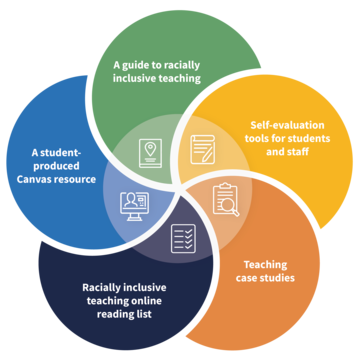
A guide to racially inclusive teaching is an Oxford Teaching Idea developed by the Centre for Teaching and Learning. It provides prompt questions to consider how students could be encouraged to engage with race and racial diversity in their learning and ways to support a racially diverse classroom.
Questions one to five in the guide explore how students could be encouraged to engage with racial content and diversity in their learning. Questions six to 10 explore ways to support a racially diverse classroom and encourage all students to engage in discussions about race. The prompts and ideas provided in this guide come from conversations with students and staff at Oxford as well as broader scholarship on racially inclusive teaching.
You may find this a useful starting point for considering racially inclusive teaching practices. In reflecting on this guidance, you may find it helpful to consider how the suggested approaches may need to be adapted to suit different teaching and learning contexts and settings (eg in tutorials or lectures, online or in-person).








